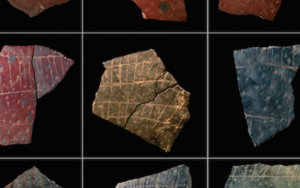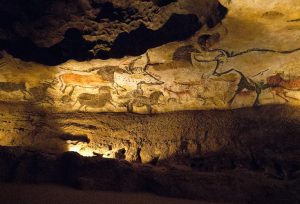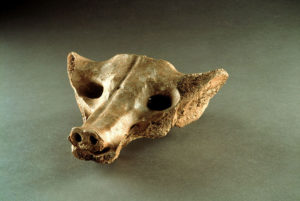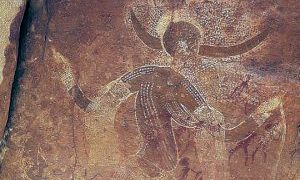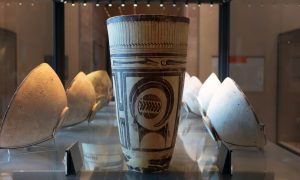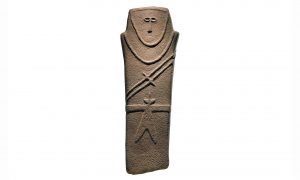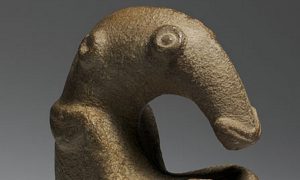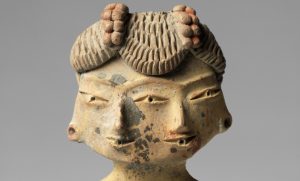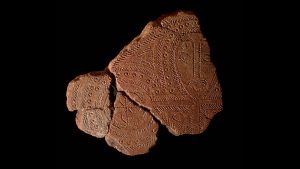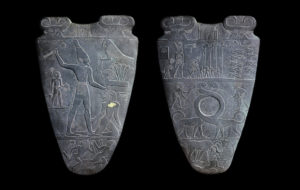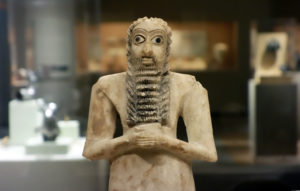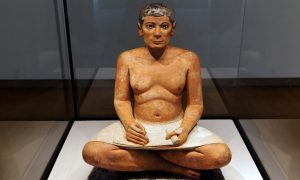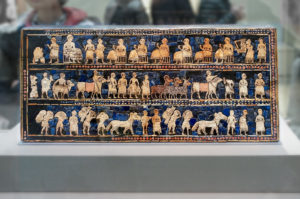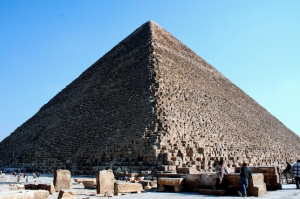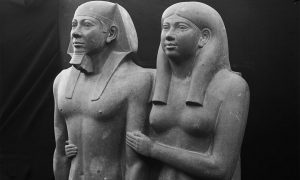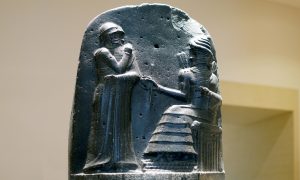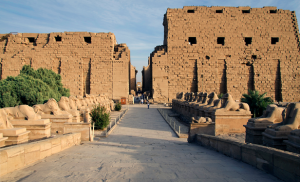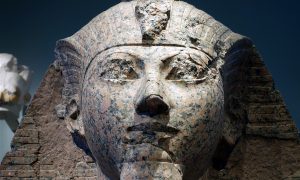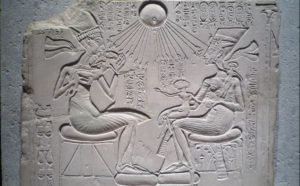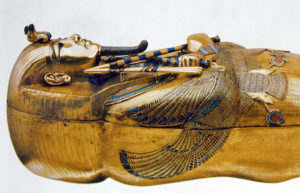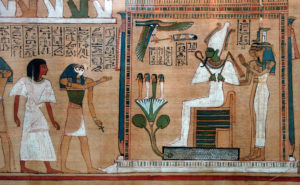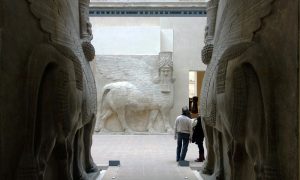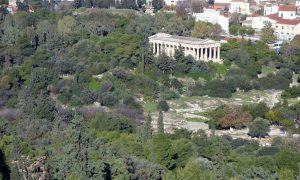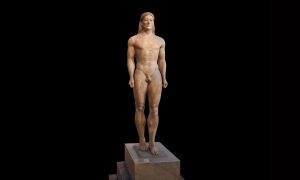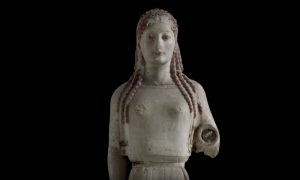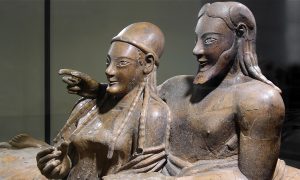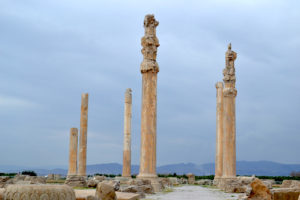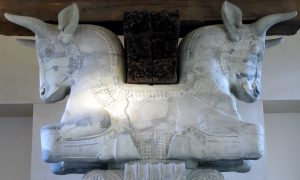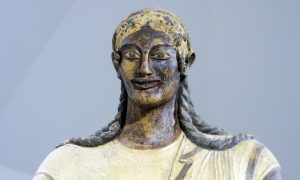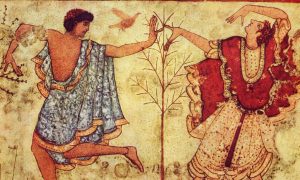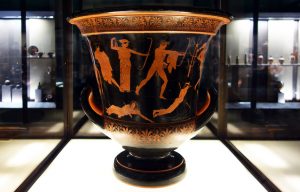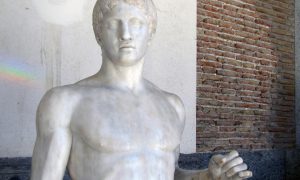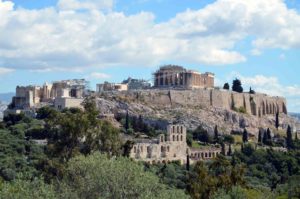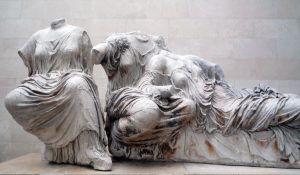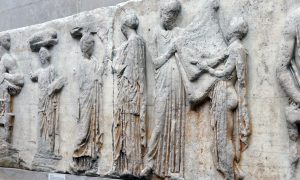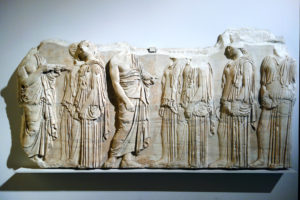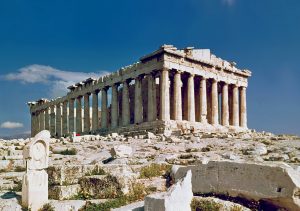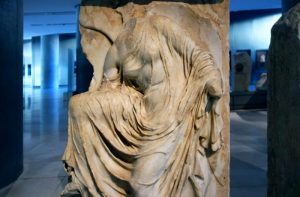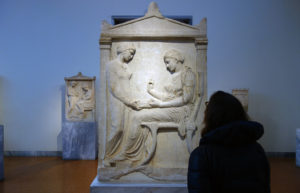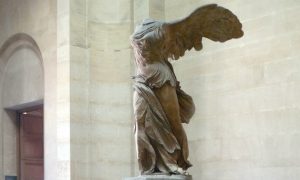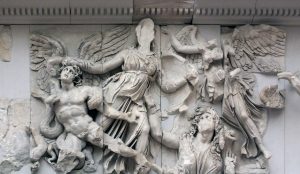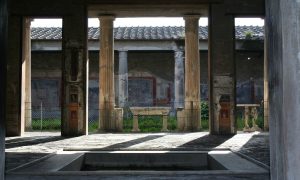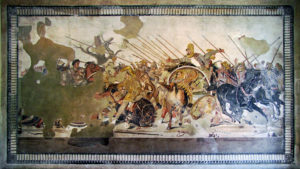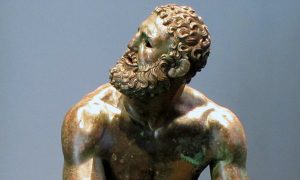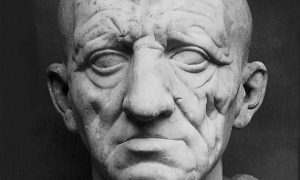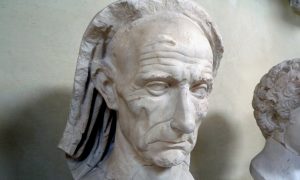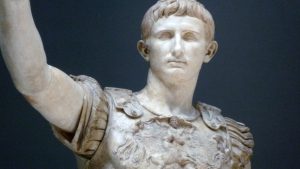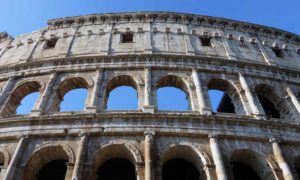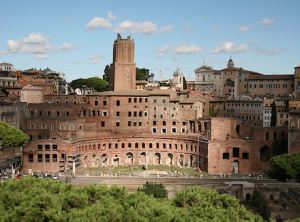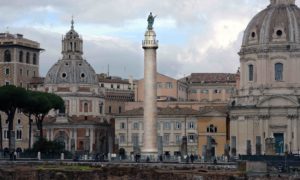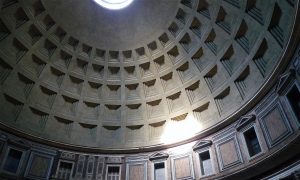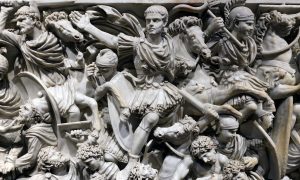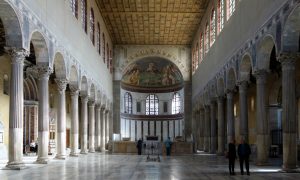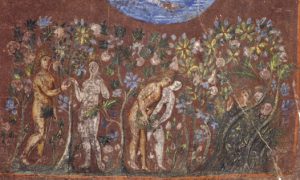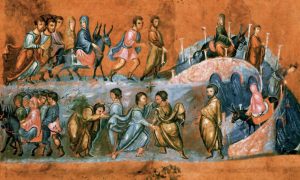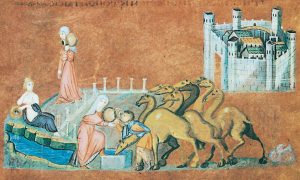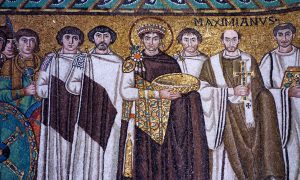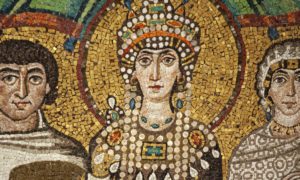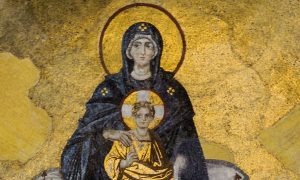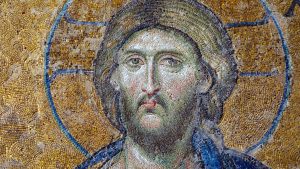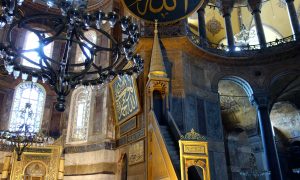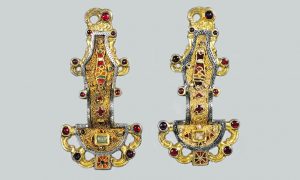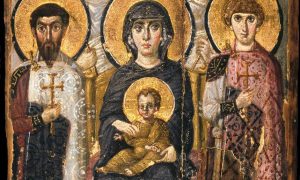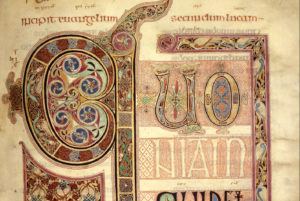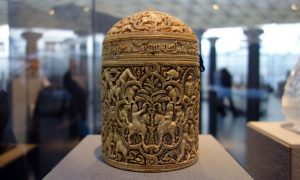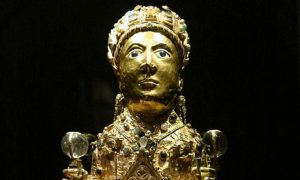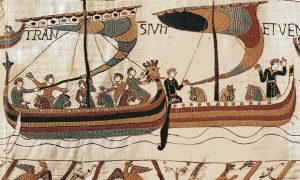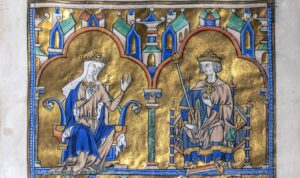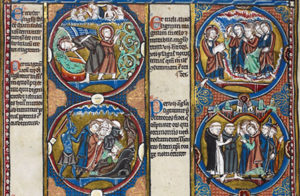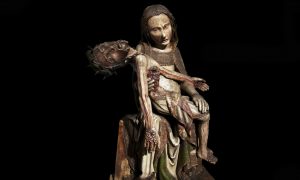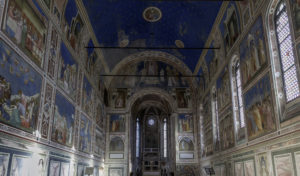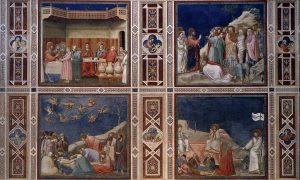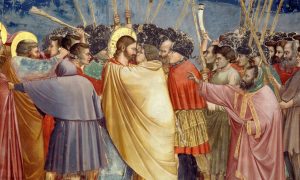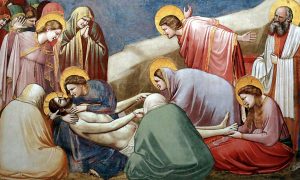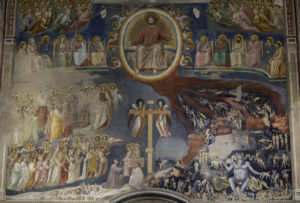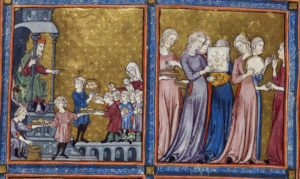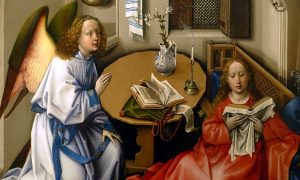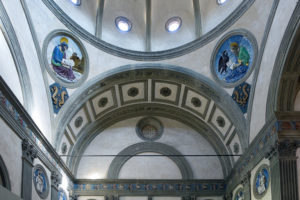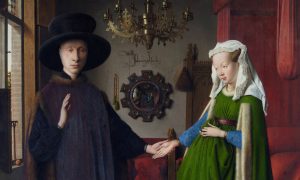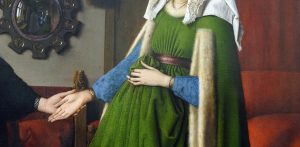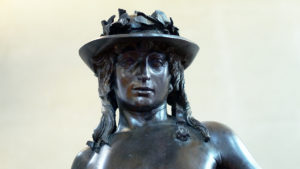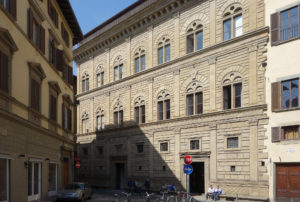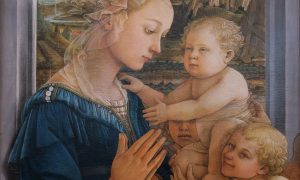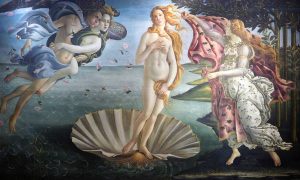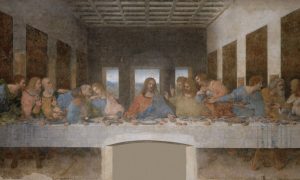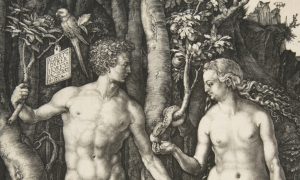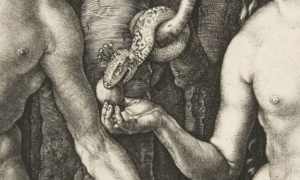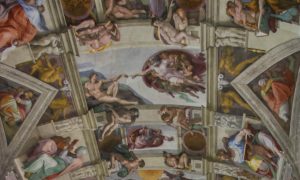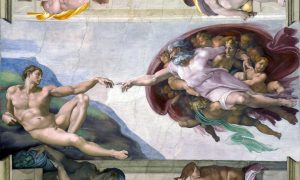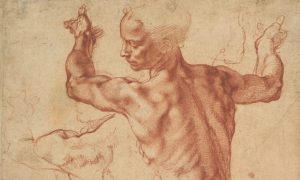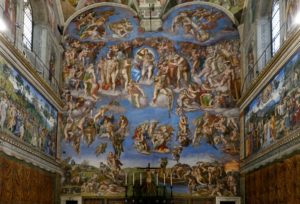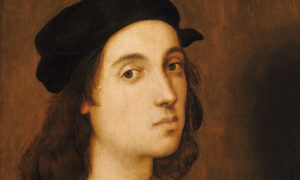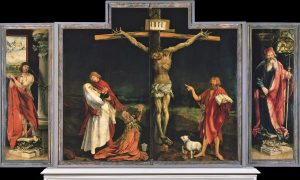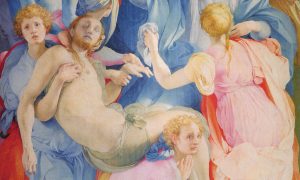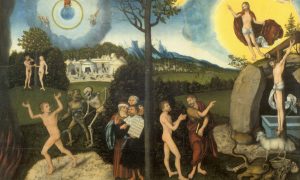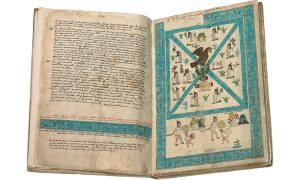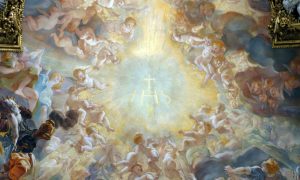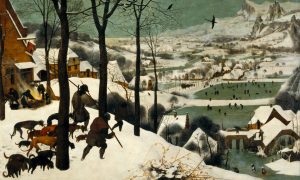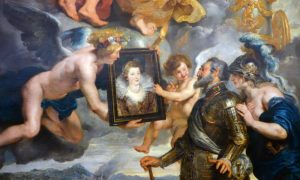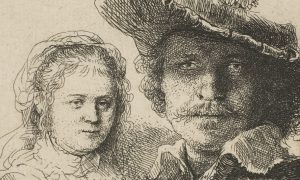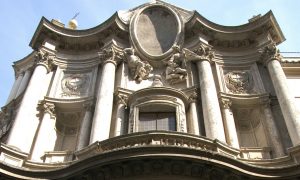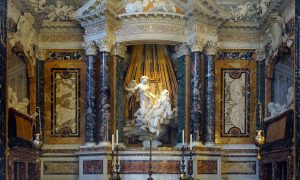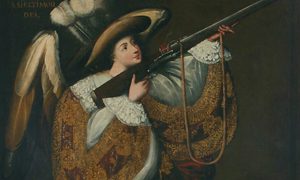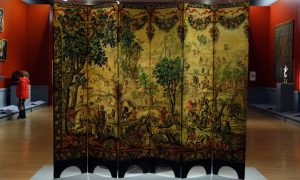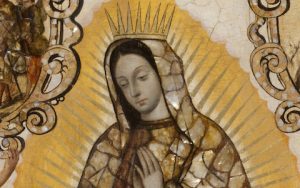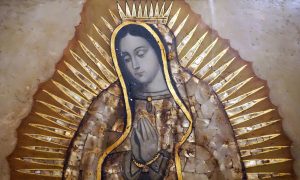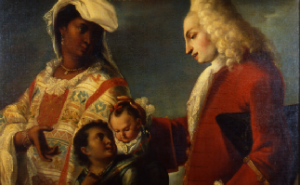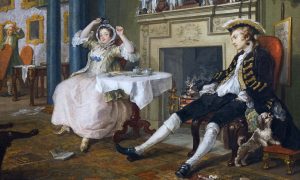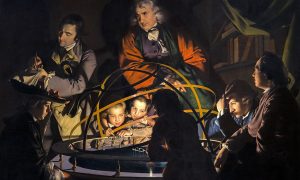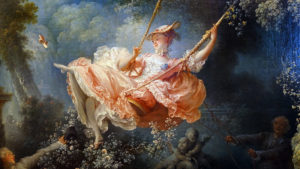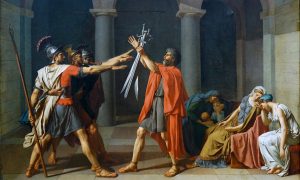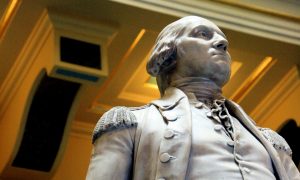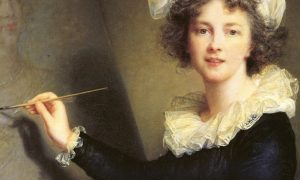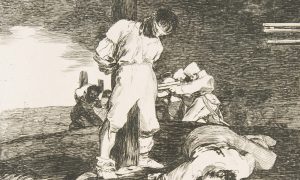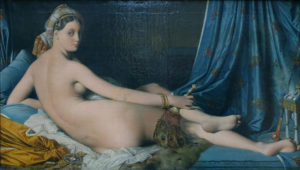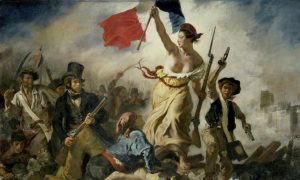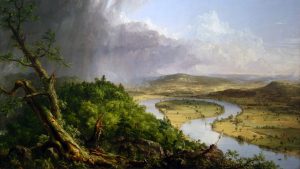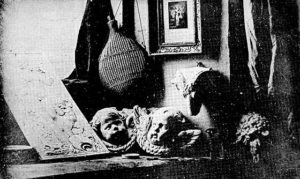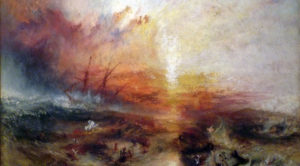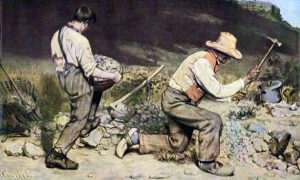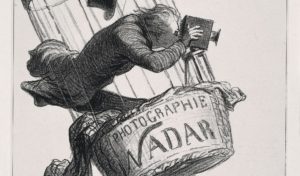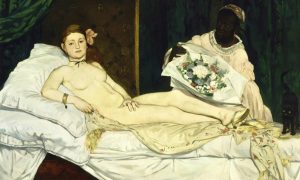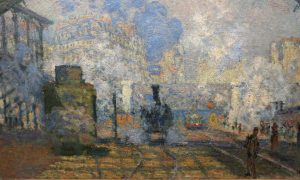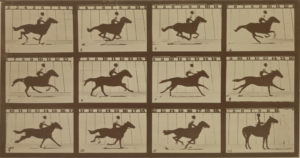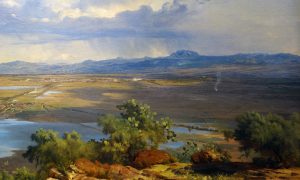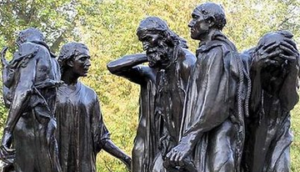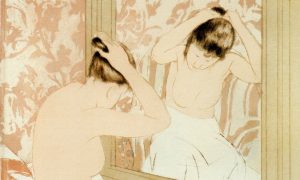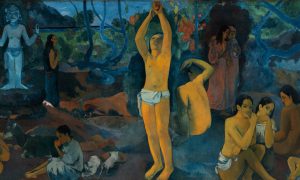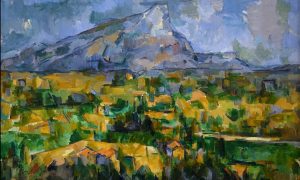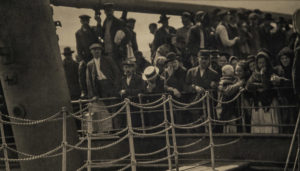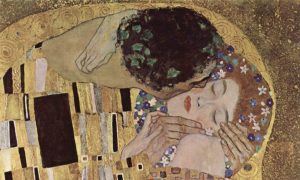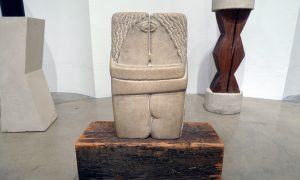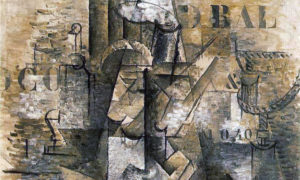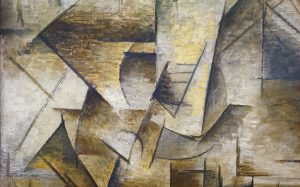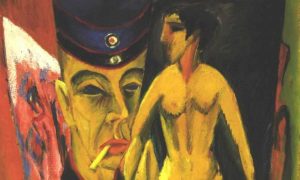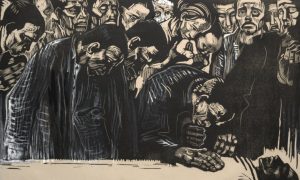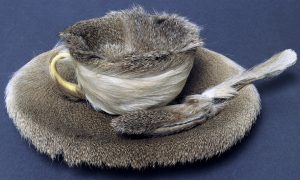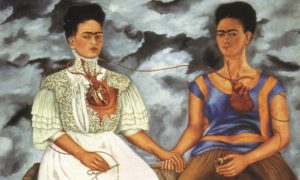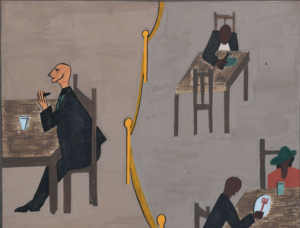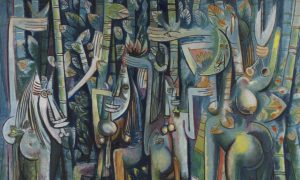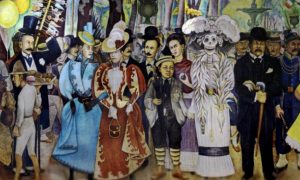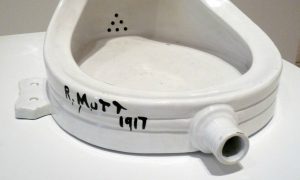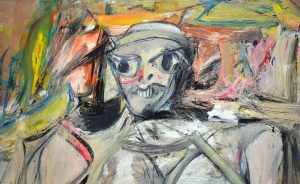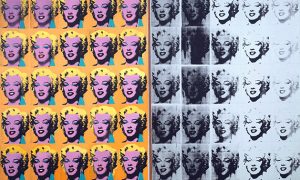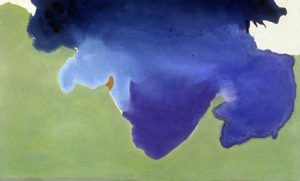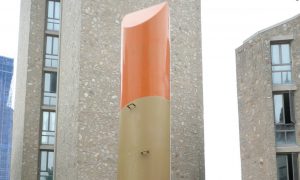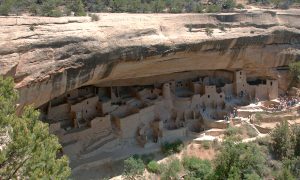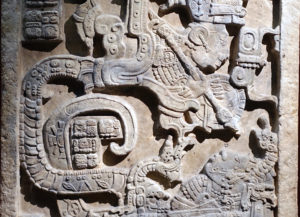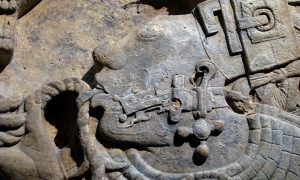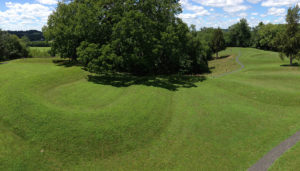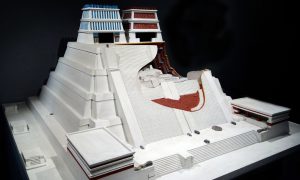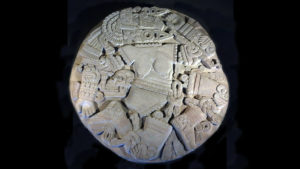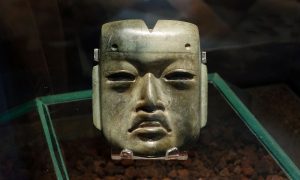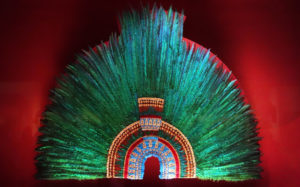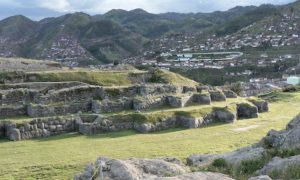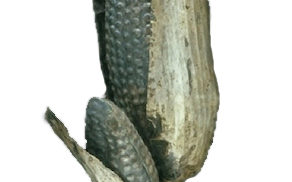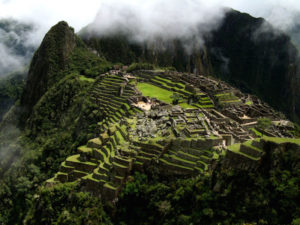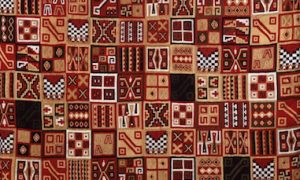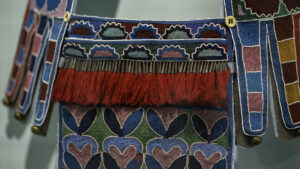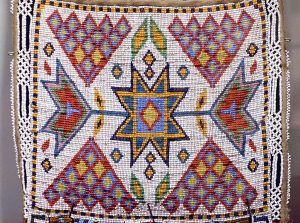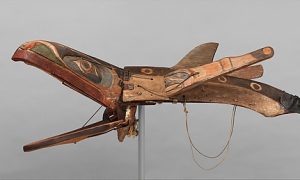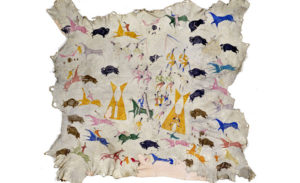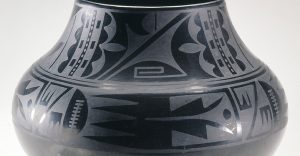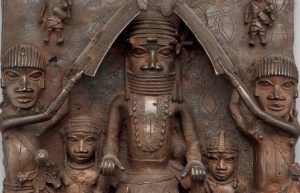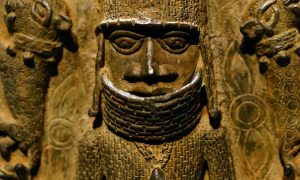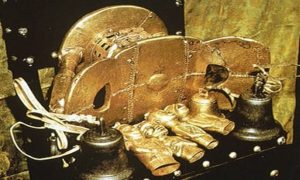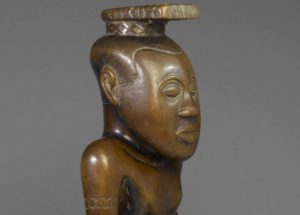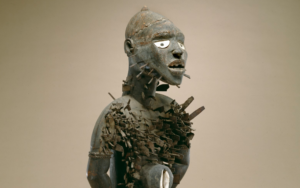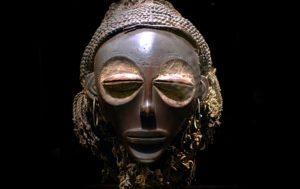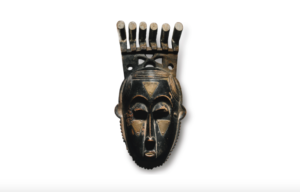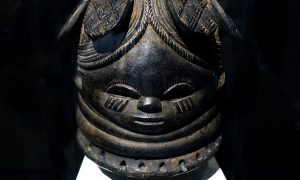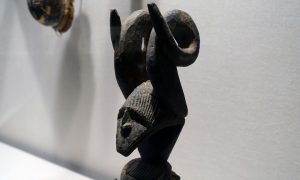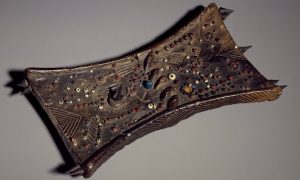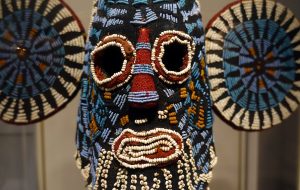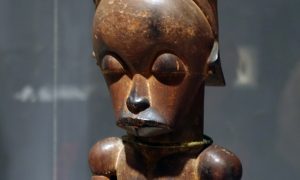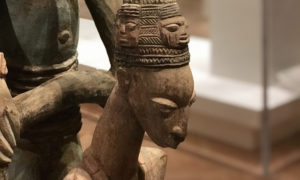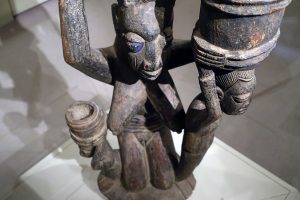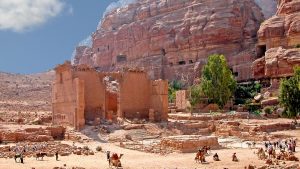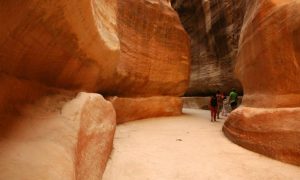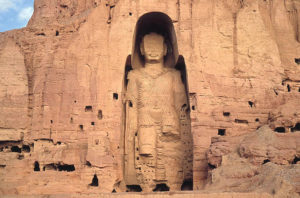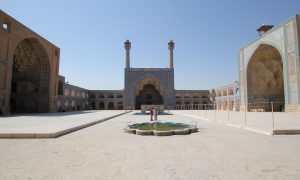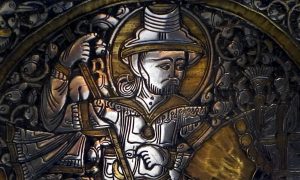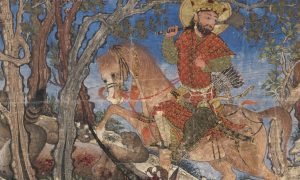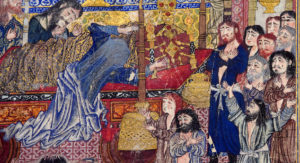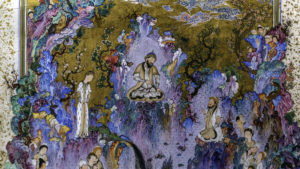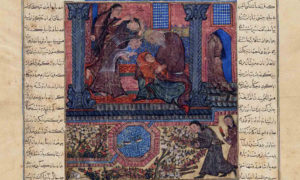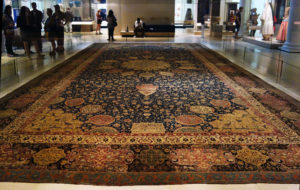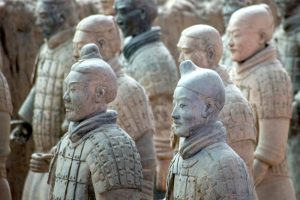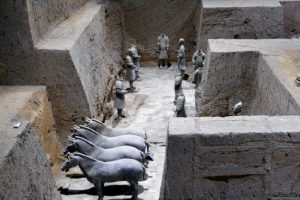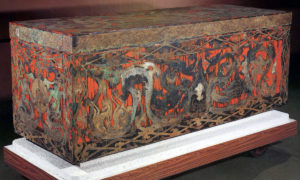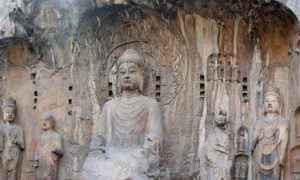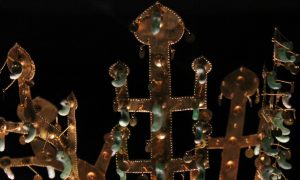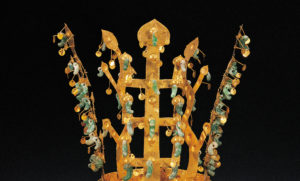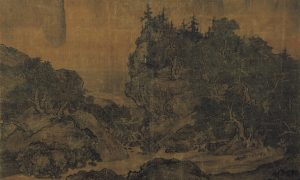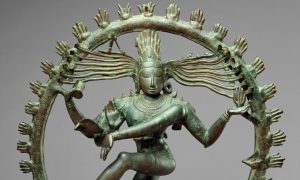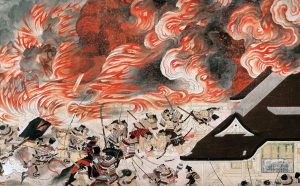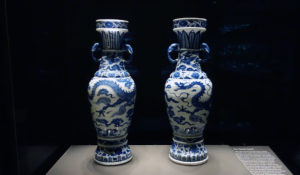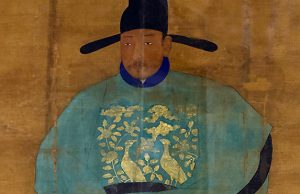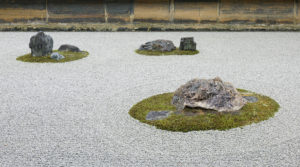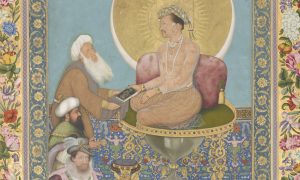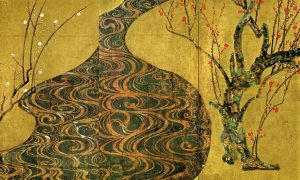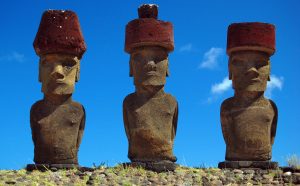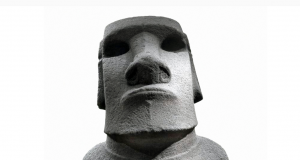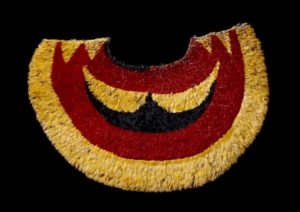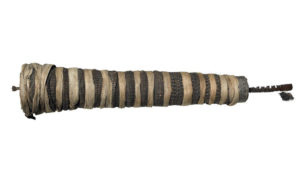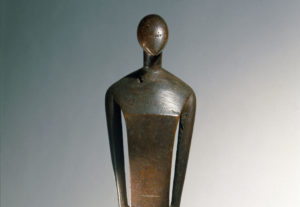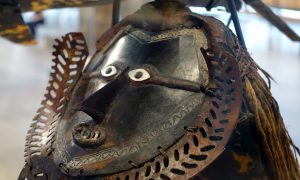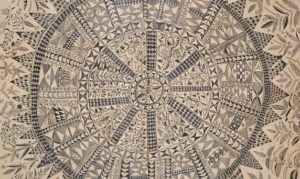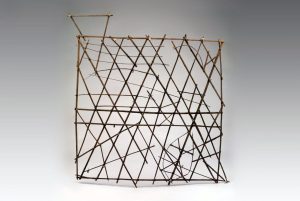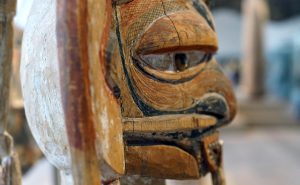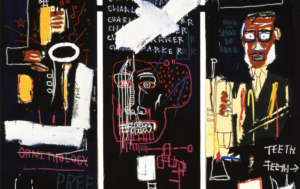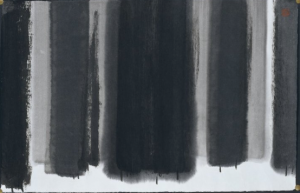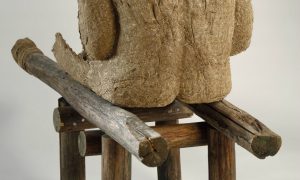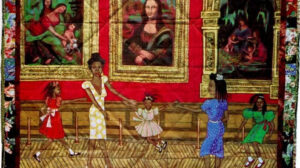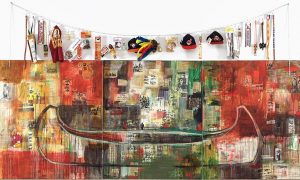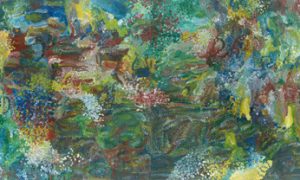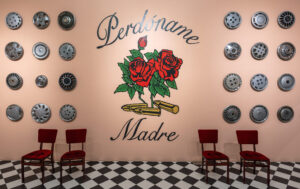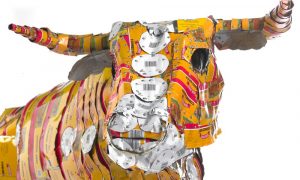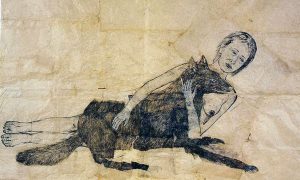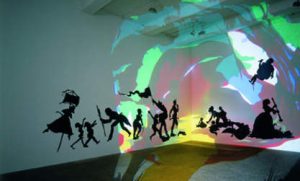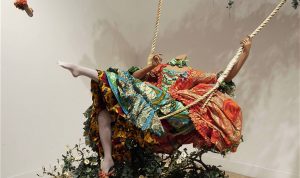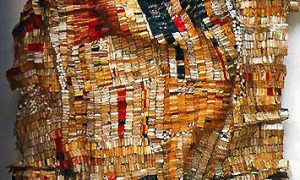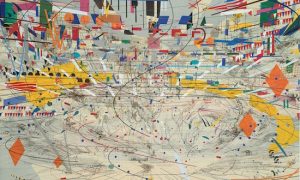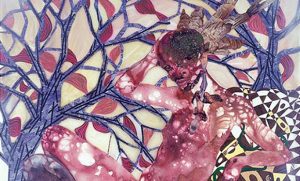Required works of art for AP®︎ Art History
These works of art were selected by the College Board because they "represent foundational exemplars of global artistic traditions." Smarthistory is pleased to support the dramatic expansion of this curriculum beyond the Anglo-European canon.
Special thanks to the many art historians and curators who have contributed their expertise.
You might find our free world art history textbook (Reframing Art History) useful—it contains many of the 250 required works, and will eventually include them all. It is officially listed on the College Board's textbook list in their Course Audit.
Smarthistory's content can be found here, and on Khan Academy (same content, different site).
AP®︎ Art History is a registered trademark of the College Board, which was not involved in the production of this product.
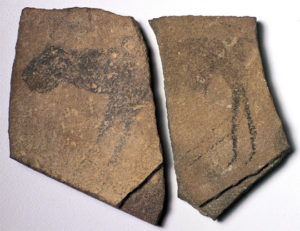
Apollo 11 Cave Stones c. 25,500–25,300 B.C.E., Namibia (photo: State Museum of Namibia)
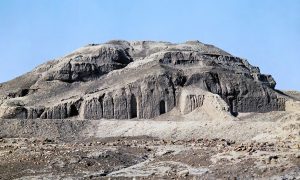
Remains of the Anu Ziggurat, c. 3517–3358 B.C.E., from Uruk (modern Warka) (photo: Geoff Emberling, by permission)
-
12.White Temple and its ziggurat
-
13.Palette of King Narmer
-
14.Statues of votive figures, from the Square Temple at Eshnunna (modern Tell Asmar, Iraq)
-
15.Seated scribe
-
16.Standard of Ur from the Royal Tombs at Ur (modern Tell el-Muqayyar, Iraq)
-
17.Great Pyramids (Menkaura, Khafre, Khufu) and Great Sphinx
-
18.King Menkaura and queen
-
19.The Code of Hammurabi
-
20.Temple of Amun-Re and the Hypostyle Hall
-
21.Mortuary Temple of Hatshepsut
-
22.Akhenaten, Nefertiti, and three daughters
-
23.Tutankhamun’s tomb, innermost coffin
-
24.Last judgment of Hunefer, from his tomb (page from the Book of the Dead)
-
25.Lamassu from the citadel of Sargon II, Dur Sharrukin (modern Khorsabad, Iraq)
-
26.Athenian Agora
-
27.Anavysos Kouros
-
28.Peplos Kore from the Acropolis
-
29.Sarcophagus of the Spouses
-
30.Audience Hall (apadana) of Darius and Xerxes
-
31.Temple of Minerva (Veii, near Rome, Italy) and sculpture of Apollo, Master sculptor Vulca
-
32.Tomb of the Triclinium
-
33.Niobides Krater
-
34.Doryphoros (Spear-Bearer), Polykleitos
-
35.Acropolis
-
36.Grave stele of Hegeso
-
37.Winged Victory of Samothrace
-
38.Great Altar of Zeus and Athena at Pergamon
-
39.House of the Vettii
-
40.Alexander Mosaic from the House of Faun, Pompeii
-
41.Seated Boxer
-
42.Head of a Roman patrician
-
43.Augustus of Prima Porta
-
44.Colosseum (Flavian Amphitheater)
-
45.Forum of Trajan, Apollodorus of Damascus
-
46.Pantheon
-
47.Ludovisi Battle Sarcophagus
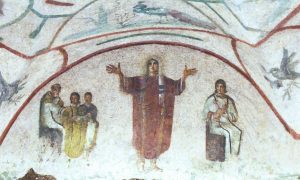
Detail of the Cubiculum of the Veiled Woman, Catacomb of Priscilla, late 2nd century–4th century C.E., Late Antique Europe, Rome, Italy
-
48.Catacomb of Priscilla
-
49.Santa Sabina
-
50.Vienna Genesis
-
51.San Vitale
-
52.Hagia Sophia, Anthemius of Tralles and Isidorus of Miletus
-
53.Merovingian looped fibulae
-
54.Virgin (Theotokos) and Child between Saints Theodore and George
-
55.Lindisfarne Gospels: St. Matthew, cross-carpet page; St. Luke portrait page; St. Luke incipit page
-
56.Great Mosque at Cordoba
-
57.Pyxis of al-Mughira
-
58.Church of Sainte-Foy
-
59.Bayeux Tapestry
-
60.Chartres Cathedral
-
61.Dedication Page with Blanche of Castile and King Louis IX of France, Scenes from the Apocalypse from Bibles moralisées
-
62.Röttgen Pietà
-
63.Arena (Scrovegni) Chapel, Giotto di Bondone
-
64.Golden Haggadah (The Plagues of Egypt, Scenes of Liberation, and Preparation for Passover)
-
65.Alhambra
-
66.Annunciation Triptych (Merode Altarpiece), Workshop of Robert Campin
-
67.Pazzi Chapel, Filippo Brunelleschi
-
68.The Arnolfini Portrait, Jan Van Eyck
-
69.David, Donatello
-
70.Palazzo Rucellai, Leon Battista Alberti
-
71.Madonna and Child with Two Angels, Fra Filippo Lippi
-
72.Birth of Venus, Sandro Botticelli
-
73.Last Supper, Leonardo da Vinci
-
74.Adam and Eve, Albrecht Dürer
-
75.Sistine Chapel ceiling and altar wall frescos, Michelangelo
-
76.School of Athens, Raphael
-
77.Isenheim Altarpiece, Matthias Grünewald
-
78.Entombment of Christ, Jacopo da Pontormo
-
79.Allegory of Law and Grace, Lucas Cranach the Elder
-
80.Venus of Urbino, Titian
-
81.Frontispiece of the Codex Mendoza
-
82.Il Gesù, including Triumph of the Name of Jesus ceiling fresco
-
83.Hunters in the Snow, Pieter Bruegel the Elder
-
84.Mosque of Selim II, Mimar Sinan
-
85.Calling of St. Matthew, Caravaggio
-
86.Henri IV Receives the Portrait of of Marie de’Medici, from the Marie de’Medici Cycle, Peter Paul Rubens
-
87.Self-Portrait with Saskia, Rembrandt van Rijn
-
88.San Carlo alle Quattro Fontane, Francesco Borromini
-
89.Ecstasy of Saint Teresa, Gian Lorenzo Bernini
-
90.Angel with Arquebus, Asiel Timor Dei, Master of Calamarca
-
91.Las Meninas, Diego Velázquez
-
92.Woman Holding a Balance, Johannes Vermeer
-
93.The Palace at Versailles
-
94.Screen with the Siege of Belgrade and hunting scene
-
95.The Virgin of Guadalupe (Virgen de Guadalupe), Miguel González
-
96.Fruit and Insects, Rachel Ruysch
-
97.Spaniard and Indian Produce a Mestizo, attributed to Juan Rodríguez Juárez
-
98.The Tête à Tête, from Marriage a la Mode, William Hogarth

Miguel Cabrera, Portrait of Sor Juana Inés de la Cruz (detail), c. 1750, New Spain
-
99.Portrait of Sor Juana Inés de la Cruz, Miguel Cabrera
-
100.A Philosopher Giving a Lecture on the Orrery, Joseph Wright of Derby
-
101.The Swing, Jean-Honoré Fragonard
-
102.Monticello, Thomas Jefferson
-
103.The Oath of the Horatii, Jacques-Louis David
-
104.George Washington, Jean-Antoine Houdon
-
105.Self-Portrait, Elisabeth Vigée Le Brun
-
106.Y no hai remedio (And There’s Nothing to Be Done), from Los Desastres de la Guerra (The Disasters of War), plate 15, Francesco de Goya
-
107.La Grande Odalisque, Jean-Auguste-Dominique Ingres
-
108.Liberty Leading the People, Eugène Delacroix
-
109.The Oxbow (View from Mount Holyoke, Northampton, Massachusetts, after a Thunderstorm), Thomas Cole
-
110.Still Life in Studio, Louis-Jacques-Mandé Daguerre
-
111.Slave Ship (Slavers Throwing Overboard the Dead and Dying, Typhoon Coming On), J.M.W. Turner
-
112.Palace of Westminster (Houses of Parliament), Charles Barry and A.W.N. Pugin
-
113.The Stone Breakers, Gustave Courbet
-
114.Nadar Raising Photography to the Height of Art, Honoré Daumier
-
115.Olympia, Édouard Manet
-
116.The Saint-Lazare Station, Claude Monet
-
117.The Horse in Motion, Eadweard Muybridge
-
118.The Valley of Mexico from the Hillside of Santa Isabel (El Valle de México desde el Cerro de Santa Isabel), José María Velasco
-
119.The Burghers of Calais, Auguste Rodin
-
120.The Starry Night, Vincent van Gogh
-
121.The Coiffure, Mary Cassatt
-
122.The Scream, Edvard Munch
-
123.Where do we come from? What are we? Where are we going?, Paul Gauguin
-
124.Carson, Pirie, Scott and Company Building, Louis Sullivan
-
125.Mont Sainte-Victoire, Paul Cézanne
-
126.Les Demoiselles d’Avignon, Pablo Picasso
-
127.The Steerage, Alfred Stieglitz
-
128.The Kiss, Gustav Klimt
-
129.The Kiss, Constantin Brancusi
-
130.The Portuguese, Georges Braque
-
131.Goldfish, Henri Matisse
-
132.Improvisation 28 (second version), Vasily Kandinsky
-
133.Self-Portrait As a Soldier, Ernst Ludwig Kirchner
-
134.Memorial Sheet of Karl Liebknecht, Käthe Kollwitz
-
135.Villa Savoye, Le Corbusier
-
136.Composition with Red, Blue, and Yellow, Piet Mondrian
-
137.Illustration from The Results of the First Five-Year Plan, Varvara Stepanova
-
138.Object (Le Déjeuner en fourrure), Meret Oppenheim
-
139.Fallingwater, Frank Lloyd Wright
-
140.The Two Fridas (Las dos Fridas), Frida Kahlo
-
141.The Migration of the Negro, Panel no. 49, Jacob Lawrence
-
142.The Jungle, Wilfredo Lam
-
143.Dream of a Sunday Afternoon in the Alameda Park, Diego Rivera
-
144.Fountain (second version), Marcel Duchamp
-
145.Woman, I, Willem de Kooning
-
146.Seagram Building, Ludwig Mies van der Rohe, Philip Johnson
-
147.Marilyn Diptych, Andy Warhol
-
148.Narcissus Garden, Yayoi Kusama
-
149.The Bay, Helen Frankenthaler
-
150.Lipstick (Ascending) on Caterpillar Tracks, Claes Oldenburg
-
151.Spiral Jetty, Robert Smithson
-
152.House in New Castle County, Robert Venturi, John Rausch and Denise Scott Brown
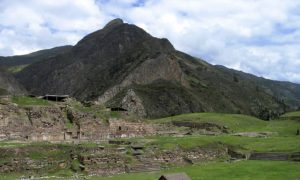
Chavín de Huántar, 900–200 B.C.E., Peru (photo: Sharon odb, CC BY-SA 3.0)
-
153.Chavín de Huántar
-
154.Mesa Verde cliff dwellings
-
155.Yaxchilán
-
156.Great Serpent Mound
-
157.Templo Mayor (Main Temple)
-
158.Ruler’s feather headdress (probably of Motecuhzoma II)
-
159.City of Cusco, including Qorikancha (Inka main temple), Santo Domingo (Spanish colonial convent), and Walls at Saqsa Waman (Sacsayhuaman)
-
160.Maize cobs
-
161.City of Machu Picchu
-
162.All-T’oqapu tunic
-
163.Bandolier bag
-
164.Transformation mask
-
165.Painted elk hide, attributed to Cotsiogo (Cadzi Cody)
-
166.Black-on-black ceramic vessel, Maria Martínez and Julian Martínez
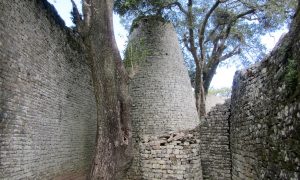
Conical Tower, Great Zimbabwe, c. 1000–1400 C.E., Shona people, Southeastern Zimbabwe (photo: Mandy, CC BY 2.0)
-
167.Conical tower and circular wall of Great Zimbabwe
-
168.Great Mosque of Djenné
-
169.Wall plaque, from Oba's palace
-
170.Sika dwa kofi (Golden Stool)
-
171.Ndop (portrait figure) of King Mishe miShyaang maMbul
-
172.Power figure (Nkisi n'kondi)
-
173.Female (pwo) mask
-
174.Portrait mask (Mblo)
-
175.Bundu mask
-
176.Ikenga (shrine figure)
-
177.Lukasa (memory board)
-
178.Aka elephant mask
-
179.Reliquary figure (byeri)
-
180.Veranda post of enthroned king and senior wife (Opo Ogoga)

Tombs at Petra (Jordan), c. 400 B.C.E–100 C.E., Nabataean (photo: Dennis Jarvis, CC BY-SA 2.0)
-
181.Petra, Jordan: Treasury and Great Temple
-
182.Buddha, Bamiyan
-
183.The Kaaba
-
184.Jowo Rinpoche, enshrined in the Jokhang Temple
-
185.Dome of the Rock
-
186.Great Mosque (Masjid-e Jameh), Isfahan
-
187.Folio from a Qur’an
-
188.Basin (Baptistère de Saint Louis), Mohammed ibn al-Zain
-
189.Bahram Gur Fights the Karg, folio from the Great Il-Khanid Shahnama
-
190.The Court of Gayumars, folio from Shah Tahmasp’s Shahnama
-
191.The Ardabil Carpet
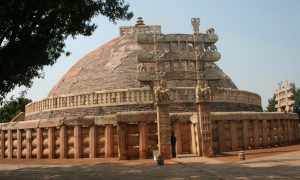
Great Stupa at Sanchi, 3rd century B.C.E.–1st century C.E., Sanchi, Madhya Pradesh, India (photo: AyushDwivedi1947, CC BY-SA 4.0)
-
192.Great Stupa at Sanchi
-
193.Terra cotta warriors from mausoleum of the first Qin emperor of China
-
194.Funeral banner of Lady Dai (Xin Zhui)
-
195.Longmen caves
-
196.Gold and jade crown
-
197.Tōdai-ji
-
198.Borobudur Temple
-
199.Angkor, the temple of Angkor Wat
-
200.Lakshmana Temple
-
201.Travelers among Mountains and Streams, Fan Kuan
-
202.Shiva as Lord of the Dance (Nataraja)
-
203.Night Attack on the Sanjô Palace
-
204.The David Vases
-
205.Portrait of Sin Sukju (1417–1475)
-
206.Forbidden City
-
207.Ryōan-ji
-
208.Jahangir Preferring a Sufi Shaikh to Kings, Bichitr
-
209.Taj Mahal
-
210.Red and White Plum Blossoms, Ogata Kōrin
-
211.Under the Wave off Kanagawa (Kanagawa oki nami ura), also known as The Great Wave, from the series Thirty-six Views of Mount Fuji, Katsushika Hokusai
-
212.Chairman Mao en Route to Anyuan, Liu Chunhua

Nan Madol, 13th-17th century C.E., Pohnpei, The Federated States of Micronesia (photo: CT Snow, CC BY 2.0)
-
213.Nan Madol
-
214.Moai on platform (ahu)
-
215.‘Ahu ‘ula (feather cape)
-
216.Staff god
-
217.Female deity
-
218.Buk (mask)
-
219.Hiapo (tapa)
-
220.Tamati Waka Nene, Gottfried Lindauer
-
221.Navigation chart
-
222.Malagan display and mask
-
223.Presentation of Fijian Mats and Tapa Cloths to Queen Elizabeth II

Christo and Jeanne-Claude, The Gates, 1979-2005 (view across the pond looking southeast) (photo: © 2005 Christo and Jeanne-Claude
-
224.The Gates, Christo and Jeanne-Claude
-
225.Vietnam Veterans Memorial, Maya Lin
-
226.Horn Players, Jean-Michel Basquiat
-
227.Summer Trees, Song Su-Nam
-
228.Androgyne III, Magdalena Abakanowicz
-
229.A Book from the Sky, Xu Bing
-
230.Pink Panther, Jeff Koons
-
231.Untitled #228, Cindy Sherman
-
232.Dancing at the Louvre, from the series The French Collection, part 1; #1, Faith Ringgold
-
233.Trade (Gifts for Trading Land with White People), Jaune Quick-to-See Smith
-
234.Earth’s Creation, Emily Kame Kngwarreye
-
235.Rebellious Silence, from the Women of Allah series, Shirin Neshat (artist); photo by Cynthia Preston
-
236.En la barberia no se llora (No Crying Allowed in the Barbershop), Pepón Osorio
-
237.Pisupo Lua Afe (Corned Beef 2000), Michel Tuffery
-
238.Electronic Superhighway, Nam June Paik
-
239.The Crossing, Bill Viola
-
240.Guggenheim Museum Bilbao, Frank Gehry
-
241.Pure Land, Mariko Mori
-
242.Lying with the Wolf, Kiki Smith
-
243.Darkytown Rebellion, Kara Walker
-
244.The Swing (After Fragonard), Yinka Shonibare
-
245.Old Man’s Cloth, El Anatsui
-
246.Stadia II, Julie Mehretu
-
247.Preying Mantra, Wangechi Mutu
-
248.Shibboleth, Doris Salcedo
-
249.MAXXI National Museum of XXI Century Arts, Zaha Hadid
-
250.Kui Hua Zi (Sunflower Seeds), Ai Weiwei

